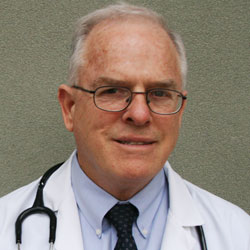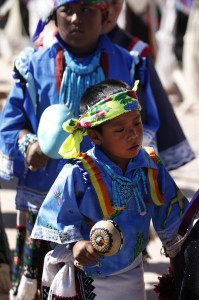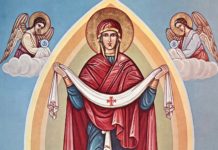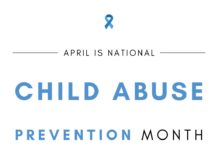
Opinions expressed are the writers’ and not necessarily the views of The Catholic Sun or the Diocese of Phoenix.
Browning Montana on the eastern edge of Glacier National Park is in the middle of the Blackfeet Reservation. I was there in May, again as a guest of the annual men’s Cursillo. Last year, I tried to be an active participant. It didn’t work very well. For one thing, they were a tough crowd when it came to my jokes.
But not just for jokes. Someone told me, “For white people, spirituality is 90 percent in the head and 10 percent in the heart. For us Indians, it’s the other way around.” So I went back to Browning again this year, to be still and learn more about the heart.
Indian hearts
Much in native spirituality easily integrates with orthodox Christianity. But there are important cultural differences between wider American Catholicism, and Catholic life on the reservation.
Alcohol is a problem everywhere for Native Americans. But when a group of men gathered to share a bottle on the steps of Little Flower Church Saturday afternoon – they first made the sign of the cross before sitting down. And teen pregnancy is everywhere, but there is very little demand for abortion. Every child is a welcome member of the tribe, no matter how clouded his or her origins.
You want to make a pillowcase that has Our Lady of Guadalupe? The Browning Fabric Shop has a nice selection of bolts with Our Lady and other religious themes.
Some people living dissolute lives suddenly find themselves in real trouble, yet they all know right where to find Fr. Ed Kohler, who has lovingly served and identified with them for some 30 years.
Then there is the Cursillo movement.
Native American spirituality
Becoming Catholic for many Indians of the Northwest was more of an educational and growth process out of their native beliefs and traditions than conversion away from them. Those who actually led them to the faith in the 19th century included traveling Mohawks, whose ancestors had tortured and killed the North American Jesuit martyrs some 200 years earlier.
The North American Martyrs were eight Jesuit missionaries commissioned to work among the Huron Native Americans during the mid-17th century.
More recently, the Cursillo movement has been an extremely powerful force encouraging Indians to return to the faith. Adaptations in Browning have included “Search,” a shorter high school program. And for those who have completed an adult Cursillo, there is a “Step 2” program.
Step 2 is for anyone who has been affected by drugs or alcohol. As family physician and tribal member Dr. Mary DesRosier explained, that really means every single person on the reservation.
In spite of social problems, Catholicism is strong among Blackfeet Indians who have now traveled all over the Northwest introducing the Cursillo movement to other reservations. In solidarity with all American Indians, they stand by, merely awaiting an invitation.

The reservation influences spirituality
On the “Rez,” you have to respect your elders – technically anyone older than you. If your grandma tells you to go to the Cursillo, there’s a good chance you’ll do it – provided it’s being held on the reservation. Otherwise, not. It seems the influence of elders wanes, as in broader American culture, once you’re off tribal lands.
Having worked in the Indian Health Service for many years, I find it a rich experience to be involved in their Cursillo movement. And though more than welcome as a participant – they called me “brother” in Browning – I believe it is best for me and other non-Indians to take a more passive role.
Native Americans present their own deep and ancient spirituality, with legitimate historical traditions of their own. They are quite capable and desirous of following the Magisterium, but cooperatively, and in a way that best makes the most sense to them. In their heart-to-heart spirituality they have a deep awareness of how to best evangelize their own people. And for us non-Indians, they have much to teach us. Benedicamus Domino.







